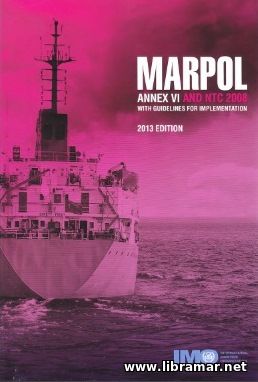 The Annex VI to the IMO Convention on Marine Pollution Prevention (MARPOL) is dedicated to the air pollution. Here is the Nox Technical Code 2008 with Guidelines to Implementation. This publication is must-have on board any vessel (since above named Convention applies to the vast majority of ships) and will be of really great use to every specialist of the maritime industry - crew members, marine engineers, independent surveyors and inspectors and many others.
You can definitely never overestimate the value of the environment and that is the reason why all of us shall take care of the nature. One of the main causes of the pollution of the atmosphere is the pollution by the emissions resulting from the operation of the marine diesel engines. Taking into account the growing number of the vessels and increasing sizes of the marine diesel engines, the necessity for establishing the regulations governing the amount of allowed emissions to the atmosphere was quite evident.
We would definitely recommend every crew member involved in the operation and maintenance of the marine diesel engines as well as the supporting personnel to go through this document and get a clear knowledge of the allowable limits of the emissions in the different areas...
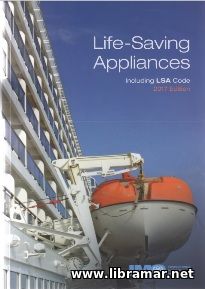 The latest official edition of one of the most important IMO publications - Lifesaving Appliances including LSA Code. The content of this regulatory document has been significantly released and updated in order to reflect all technical developments and experience gained for the past years, since the time when the previous edition of the book was released.
Traditionally, the publication opens with a short foreword followed by the International LSA Code with the content arranged in seven chapter covering general requirements applicable to LSA, personal LSA, visual signals, survival craft, rescue boats, launching/embarkation appliances and other LSA. The next part of the book contains the requirements for testing and evaluation of LSA including prototype tests, production and installation tests and three appendices with supplementary information.
The Code of practices for the evaluation, testing and acceptance of prototype novel LSA and arrangements has also been included. As you know, the LSA Code is mandated by Res. MSC.47(66) under SOLAS Reg. III/3.10. the content of this document is a must-know for every crew member and is one of the publications that shall be carried on the navigation bridge of every vessel.
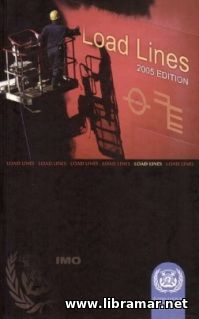 This official IMO publication does not need any specific introduction. This is the consolidated edition of the ILLC, standing for the International Load Line Convention. The main text of the subject Convention is included in the very first part of this volume, supplemented with four annexes providing the regulations for determining the load lines of the vessels, including general regulations, conditions of freeboard assignment, freeboards and special requirements applicable to the vessels with the timber freeboards assigned, zones, areas and also seasonal periods, and, finally, the certificates commonly issued under the present IMO Convention to the vessels gully complying with all its requirements.
The second part contains the articles of the 1988 Protocol while the third part contains the Load Line Convention, as it was modified by the 1988 Protocol - again, together with all annexes as in the first part. The remaining three parts of the volume provide the amendments to the Protocol of 19888 mentioned above that haven't been yet accepted by sufficient number of states and therefore still not in force, UI, i.e. Unified Interpretations of the provisions of this Convention, and the specially established Form that shall be used for recording of condition of load line assignment. Needless to say that this IMO Convention is there in the list of the mandatory shipboard publication, i.e. the document required to be carried on board of any vessel...
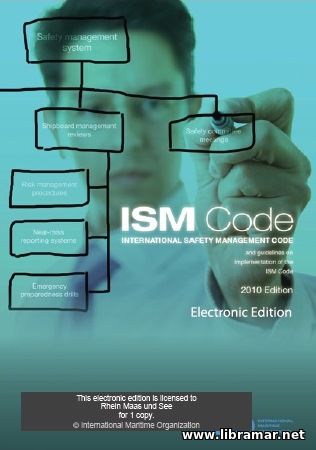 This is the electronic release of the complete text of ISM Code released in 2010. Contents - Foreword. IMO SOLAS Chapter IX... Res. A.1022(26) addressing the guidelines on proper implementation of the provisions of the ISM Code by Flag Authorities. MSC-MEPC.7/Circ. 5 containing the guidelines for the proper operational implementation of the applicable requirements of the Code by shipping companies, Circ.6 providing required guidance on the qualifications, professional training and experience required to undertake the designated person's role under the provisions of this Code, and Circ.7 - giving the guidance on reporting of the near-misses.
Relevant IMO Publishing resources. Subject Code was made mandatory when 1994 amendments to SOLAS entered into force in 1998, introducing a completely new chapter IX dedicated to the safe operation of the vessels. The associated chapter has also been included in this publication. The origins of this regulatory document are traced back to the 190s, to the times of poor ship management standards. So many major errors have been revealed in the course of the investigations, relating to the management of the ships operations, and that was actually the most important reasons for working on the implementation of strict requirements concerning the safety management.
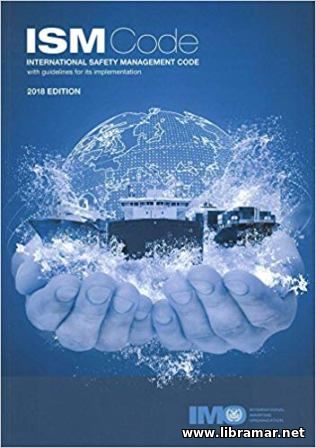 The International Safety Management Code together with the necessary guidelines for the implementation was developed by the IMO in order to provide an internationally recognized standard to be applied to the safe operation and management of the vessels, and also for prevention of the environment pollution.
The document shall be considered a truly essential reference one for the owners and operators of the ships, ship constructors, maritime administrations, manufacturers of the shipboard engines and other equipment, education entities and training providers - virtually all people whose everyday work is connected with the ensuring of safety of human life at sea and pollution prevention.
The content of the document includes relevant portions of the SOLAS and ISM Code. In addition, it also provides readers with the guidelines for the operational implementation of the Code, and other important regulatory and guiding information.
The publication is a must-have for all people engaged in the shipping industry in one way or another. It is also an excellent training tool to the students and future auditors who shall possess a sound knowledge and deep understanding of all provisions of the ISM Code.
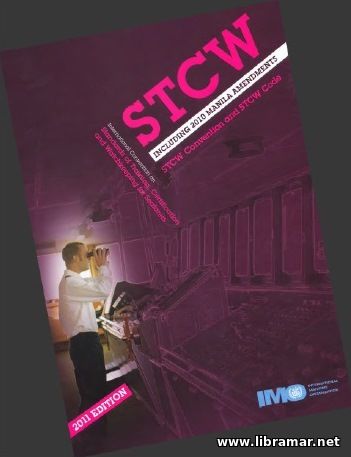 Here is the 2011 Edition of IMO STCW Convention initially released in 1978, supplemented with STCW Code. Also contains the Final Act of the 2010 Conference of Parties. The publication together with Annex provide the legal framework for application of the mandatory technical standards contains in STCW Code Part A. From any point of view, one of the most important and major marine publications crew must have onboard.
The text of the present regulatory document also includes the so-called Manila amendments dated 2010. The main body of the paper contains all original articles of the above mentioned Convention, revised Annex to the Convention, and the STCW Code that supports it. The articles of the STCW Convention together with the Annex are supposed to form the legal framework for the mandatory technical standards.
In addition to that, the STCW Code provides required technical guidance to assist people involved in the training of the seafarers or assessing their competence. Though not considered mandatory, this guidance was harmonized through numerous discussions held with IMO.
Following the recommendations provided within the document will definitely contribute in due application of the requirements of the Convention. It is therefore recommended to study every part of this paper in order to fully understand the intent of the Convention...
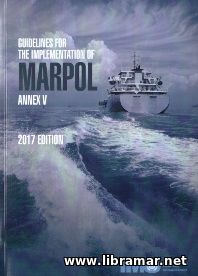 The officially released guidelines to be used for the implementation of the requirements contained in the Annex V to the MARPOL convention. The documents has several objectives, and the main objective is to assist the states in developing the domestic laws and regulations implementing Annex V and enacting them; it will also provide required assistance to the ship owners and operators, crew members and manufacturers of the equipment willing to reach compliance with the requirements that have been set forth in subject Annex.
In addition, the volume will help port/terminal operators providing reception facilities for the garbage commonly generated on board vessels. The content of the guidebook is arranged in several parts. The guidelines for implementation of the Annex itself is the first part while the second part provides instructions for the development of shipboard garbage management plans.
The next part contains the regulations for garbage pollution prevention including definitions and applications, general prohibitions, information about special areas, special requirements applicable to the fixes/floating offshore installations, exceptions, PSC on operational requirements, placards, record keeping etc. In short, everything related to the prevention of marine pollution by shipboard garbage is covered.
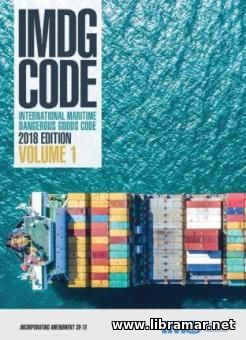 This is the very latest official edition of the IMDG Code by IMO, incorporating the amendment no. 39-18. The set is made of two volumes. The general content and arrangement of the material is pretty standard and does not significantly differ from the previous edition of the Code.
The opening art of the first volume provides the provisional and definitions of the Code together with the training requirements, while the following part addresses the classification of the dangerous goods, giving necessary information about each of the nine classes, from explosives to the miscellaneous dangerous and environmentally hazardous substances.
The third and four parts of the document cover the provisions and exceptions, and tank and packing provisions, respectively. The remaining parts of the Volume 1 address the consignment procedures; construction and testing of the packaging used for the transportation and so many other important topics.
The content of the second volume supplements the one of the first document. In short, the Code is a must-have document on board any ship engaged in the marine transportation of the dangerous goods and its provisions shall be complied with at all times.
|







